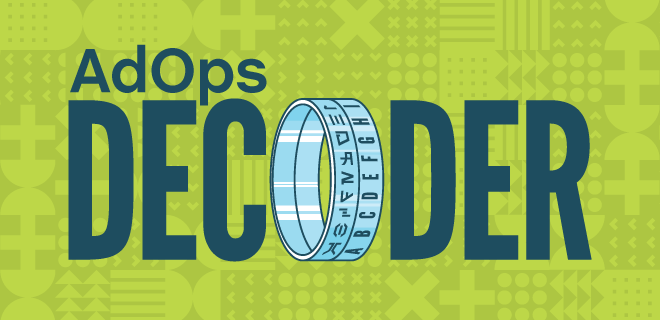
The IAB Tech Lab’s Privacy Sandbox Demo Tool, donated by Index Exchange, was developed to showcase Protected Audience API (PAAPI), a component of Google’s Privacy Sandbox. Using the tool, any ad tech professional can run through a demonstration of PAAPI to see how user interest groups are created and how relevant ads can reach consumers without cookies.
The industry is just beginning to wrap its head around how to reach consumers in a cookieless open web. Google’s Privacy Sandbox is one way of doing this, and PAAPI (Protected Audience API) is the most critical component of the Privacy Sandbox for audience addressability.
It can be hard to keep up with how these new technologies work, and this is why Index Exchange developed a demo tool to help illuminate PAAPI’s capabilities and limitations. And, to make the tool available to the entire industry, it was donated to the IAB Tech Lab.
We delved into the ins and outs of PAAPI in another Decoder article, What is PAAPI? which explains the subject in detail. Essentially, PAAPI is a way for advertisers to target ads based on anonymously supplied information (rather than cookies) that categorizes users into “interest groups.” These interest groups can be based on anything the user engages with, such as specific products or content.
Index Exchange created the demo tool to simulate what is happening on the back end when ad auctions using PAAPI take place to understand each step of the process and give its team practical knowledge of what happens behind the scenes. Though not the first tool of its kind, Index Exchange donated its demo tool to the IAB Tech Lab with the hope that it will become a resource to reach and help as many people as possible.
We chatted with Mike McNeeley, SVP of Product, Index Exchange, to gain a better understanding of what the tool does, who it was made for, and why it was important to share this tool with the industry.
What Is the IAB Tech Lab’s Privacy Sandbox Demo Tool
Designing a Tool to Demystify the Privacy Sandbox
Kacey Perinelli: What is the Privacy Sandbox Demo Tool?
 Mike McNeeley: We were digging into how the Protected Audience API works within the Privacy Sandbox and found the best way to understand it was to use it firsthand. That allowed us to see how the systems react and how the different pieces function from different perspectives i.e., publisher, advertiser, DSP, SSP.
Mike McNeeley: We were digging into how the Protected Audience API works within the Privacy Sandbox and found the best way to understand it was to use it firsthand. That allowed us to see how the systems react and how the different pieces function from different perspectives i.e., publisher, advertiser, DSP, SSP.
The goal of the demo tool is to make it easier to visualize how Protected Audience works in the browser. It’s an educational and visualization tool to see how this API works and fits together on a sample website. We wanted to create one holistic view of how everything connected in a way where we could see, observe, and interact with it. The demo project helped us, so we decided to donate it to the Tech Lab to help others.
Breaking Down How PAAPI Works, Step by Step
KP: Can you explain how the tool works & why it is a valuable resource for navigating the changing privacy landscape?
MM: To understand how the Sandbox works today, you need to look at the GitHub projects that have been created that talk about the APIs. However, for some people, it’s difficult to learn and absorb new information just by reading. The Privacy Sandbox demo works to visualize what those APIs are doing by simulating publisher and advertiser websites in one demo website.
In the demo, you can add yourself to a sample interest group; there are two to choose from, shoes and books. You declare to the browser that you are interested in shoes or books, as a consumer might do if they were shopping around. Then there’s a button for “run auction,” which represents a publisher’s ad experience with exchanges like us and DSPs. You can see a simulated bid from an advertiser from a simulated DSP through a simulated auction.
Then the ads show up giving you the end-to-end experience of how the Protected Audience would work to show an ad to a consumer. Then when you open the developer console (where developers go to see and troubleshoot JavaScript), you can view everything that is happening behind the scenes, illustrating how these APIs interact with each of the different parties. You get to see it all in one spot, on one page, in a way that makes it easier to understand, which was not previously available in any other tool.
It shows you every step along the way, and seeing each piece of that process from different angles is an opportunity to learn about how that API is facilitating which ads show up for users and why.
Hands-On Learning Is Key to Understanding
KP: What are the kinds of things that will be learned using the tool (what’s an example use case)?
MM: The first thing that can be learned from the demo is an understanding of each step of the PAAPI auction process. When you first go to the website and run an auction, nothing will happen because the user isn’t part of any interest groups. Once you join an interest group, you can see through the browser’s developer tools what is required to create and register an interest group. Seeing this in practice can help visually connect the concepts a user would usually have read about in the GitHub documentation to the actions themselves and help make the process make sense.
After you’ve added yourself to an interest group (e.g. shoes or books), the next time you click the run ad auction button you can see different aspects of how the auction is run in the browser such as when the bid is generated, and when the ads are reviewed for ad quality and checked against floors. Finally, you see the ad show up and the win notifications go out to the correct parties to handle billing and payments.
It shows you every step along the way, and seeing each piece of that process from different angles is an opportunity to learn about how that API is facilitating which ads show up for users and why.
By having the ability to understand the behind-the-scenes of the Protected Audience API, industry players will be able to evaluate how these changes will impact their business and advertising strategies and, ultimately, be able to better prepare for them.
The PAAPI Demo Tool Can Benefit Anyone in Ad Tech
KP: Are the benefits of this tool useful for everyone, or is it made specifically for either the buy or sell side?
MM: It’s made for everybody, not one type of entity or another. It’s meant to show how the process works end-to-end for everybody involved, though it’s not specifically geared toward consumers. These APIs are complicated and involve a lot of steps and a lot of actors, and the reason it’s complicated is that Google is trying to do something advanced in a privacy-safe way.
Our hope, and partly why this is now an IAB Tech Lab project, is that other folks will continue to extend and improve the demos and consolidate and curate resources that are helpful and useful to understand the Protected Audience API. People who see it and think it’s interesting can find ways to improve existing pieces or add other resources, which will benefit everyone in the industry. It’s ultimately an educational tool for everyone.
Collaboration Keeps Ad Tech Innovation Strong
KP: Why did Index Exchange feel it was important to donate this tool to IAB Tech Lab?
MM: There are a lot of people who collaborate in the Tech Lab and I think that it sends the signal that this tool is about helping the industry and facilitating our partners’ understanding of PAAPI. We thought the Tech Lab was the best place to get the maximum educational benefit out of it now and collaborate with others in the future.
The Tech Lab recognized the value of this tool to fill a gap in the market and how other people could benefit from it, so they accepted the donation and now we’re all working together to keep improving it. The ultimate goal is to foster better understanding, accelerate testing, and actively share feedback with our peers as we collectively navigate the changing addressability landscape.